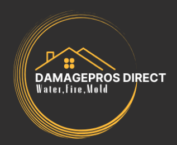5 Warning Signs Your Home Needs Immediate Flood Damage Restoration
Protect Your Home from Costly Water Damage
Many homeowners underestimate the potential for flood damage until it’s too late. Recognizing early warning signs can save you time, money, and stress. If you notice any changes in your home, acting quickly can prevent extensive damage. Below are five key indicators that your property requires immediate flood damage restoration.
1. Visible Water Damage & Staining
Before dismissing small discolorations, take a closer look at your home for visible water damage. Moisture on walls, ceilings, or floors may indicate deeper issues with your property’s integrity.
Discolored Walls and Ceilings
Stains on your walls or ceilings—often brown or yellow—suggest hidden leaks or past flooding. These marks indicate trapped moisture that can lead to further damage and mold growth if not addressed.
Peeling Paint & Bubbling Wallpaper
When moisture seeps behind walls, paint may start peeling, and wallpaper may bubble. These are not just aesthetic issues—they signal that water has infiltrated structural components, leading to mold growth and potential wood rot.
2. Structural Changes
Water can weaken your home’s structural integrity. If you notice any shifts, such as leaning walls or doors that no longer close properly, it may be due to water damage.
Warped Floors & Baseboards
Cupping, buckling, or separating baseboards are strong indicators that water has infiltrated your home. Addressing these signs quickly is critical to preventing further damage.
Cracking or Buckling Foundation
Cracks in your home’s foundation are serious red flags. Prolonged water exposure can shift the soil underneath your home, causing foundational instability. If you notice cracks or any movement, seek professional assistance immediately.
3. Health & Safety Concerns
Flood damage isn’t just about property loss—it poses health risks to you and your family.
Mold & Mildew Growth
Mold thrives in damp environments and can lead to respiratory issues and allergic reactions. If you spot mold, act immediately to contain and remediate the problem.
Musty Odors & Poor Air Quality
A persistent musty smell is a strong indicator of hidden moisture or mold growth. Poor air quality due to excessive humidity can also impact your health. Regular air quality checks and prompt water damage restoration can keep your home safe.
4. Electrical System Issues
Water can infiltrate electrical systems, creating serious hazards. If you notice any irregularities with your home’s power, call a professional immediately.
Flickering Lights & Power Fluctuations
Frequent dimming or fluctuating power can indicate compromised wiring due to moisture exposure. Ignoring this sign can lead to electrical fires or system failures.
Exposed Wiring Hazards
Wet or frayed wires present serious risks of shocks or fires. If you suspect your home’s electrical system has been affected by water damage, turn off power to the affected area and call an expert for assessment.
5. Hidden Water Damage Signs
Sometimes, water damage isn’t immediately visible. However, subtle indicators can reveal underlying moisture issues.
Unexplained Increase in Water Bills
If your water bill has unexpectedly increased despite no change in usage, hidden leaks could be the culprit. Leaks can cause severe damage over time if left unaddressed.
Changes in Door & Window Alignment
Difficulty opening or closing doors and windows may result from swelling caused by excessive moisture. This issue can also affect your home’s energy efficiency and structural stability.
Take Immediate Action
Recognizing the warning signs of flood damage can help protect your home and health. If you notice any of these issues, seek professional flood damage restoration services promptly. Addressing water damage early can prevent further destruction and keep your home safe for years to come.
FAQs
Q: What are the top signs that my home has experienced water damage?
A: Look for discoloration on walls, ceilings, and floors. Peeling paint, warped floors, and musty odors are also strong indicators.
Q: How can I tell if my basement is at risk of flooding?
A: Damp walls, water pooling in corners, excessive humidity, and foundation cracks all suggest potential flooding risks.
Q: What should I do if I notice mold growth in my home?
A: Act quickly by isolating the affected area, assessing the extent of the mold, and contacting a mold remediation specialist. Addressing the underlying moisture issue is essential to preventing recurrence.
Q: Are there specific times of the year when my home is more vulnerable to flooding?
A: Yes, homes are at higher risk during heavy rain seasons and spring snowmelt. Stay informed on local weather reports to prepare accordingly.
Q: How can professional flood damage restoration services help?
A: Experts use specialized equipment for water extraction, drying, and dehumidifying. They can also assist with mold removal, structural repairs, and insurance claims, ensuring a full recovery from flood damage.
Stay Prepared & Protect Your Home
If you suspect water damage in your home, don’t wait until it’s too late. Schedule a professional flood damage assessment today to safeguard your property and family.

